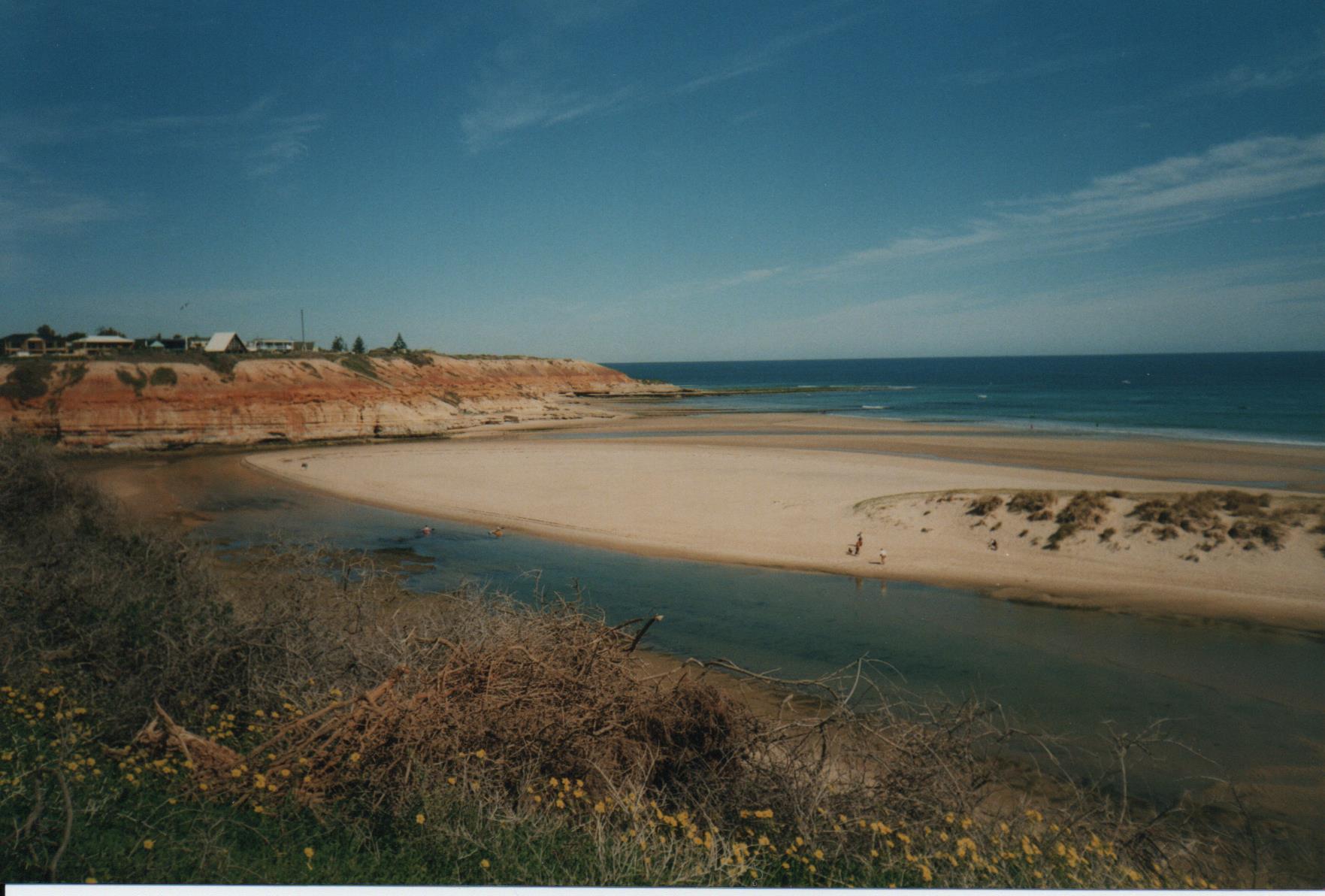According to Captain Arthur Wright – Ancestor History, Captain Arthur Wright was a seafaring captain who brought “supplies, prisoners and free settlers from England, Ireland and Scotland to Hobart” (then Hobart Town, Van Diemen’s Land).
Wright was born in St Mary, Islington, Middlesex, England to William and Catherine Wright in 1807. He was master of the vessels Active and Medway in 1831, at the age of 24. He left Portsmouth aboard the Medway with 156 male convicts to be transported to Hobart Town in 1831. Several voyages followed over the next few years.

The mouth of the Onkaparinga River
He was in command of the two-masted, 271-ton* wooden brig David Witton from London to South Australia in 1838. The David Witton was wrecked at Port Noarlunga, near the Onkaparinga River, on 17th March* 1839.
* (According to “South Australian Shipwrecks – A Data Base 1802-1989” by Peter Christopher, but 270-ton (and June 1839) according to “South Australia – What’s in a Name?” by Rodney Cockburn.)
“South Australia – What’s in a Name?” states that the David Witton landed 1100 ewes at Port Adelaide for Duncan McFarlane of Mount Barker before sailing south to Port Noarlunga. It had been chartered to deliver more ewes from the Port Phillip district to Port Adelaide “when she missed stays in a gale, and was wrecked at the mouth of the Onkaparinga (River)”.
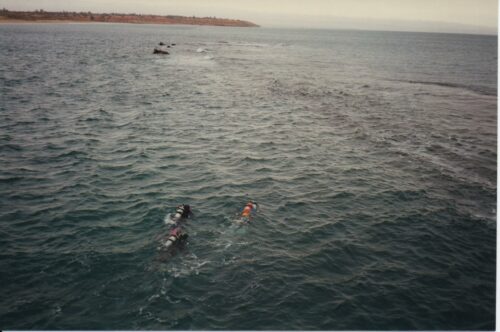
View towards the mouth of the Onkaparinga River from the Port Noarlunga jetty
(The article at https://leoniewhitecom.wordpress.com/2021/10/17/captain-arthur-wright/ states, “The David Witton brig ran aground in 1838 in the Onkaparinga River, South Australia” despite later stating, “(she) ran ashore and was wrecked at the mouth of the Onkaparinga River, near Port Noarlunga on 17 March 1839”.)
Under “The story of the David Witton”, the article further states, “(the) 270-ton brig was built at Monkwearmouthshore (near Sunderland, England) in 1833 and is 90′ x 26′ 7″ x 16′ 7″ under command of Captain Arthur Wright. She arrived at Holdfast Bay on the 3rd December 1838 from the Cape of Good Hope carrying cargo which included spirits and 30,000 bricks. She visited again on the 2 March 1939 from Port Phillip carrying 5 passengers, cargo including sheep, but with bricks, 10,000 slates and 10 tons of iron still on board from her voyage out from England (perhaps it was too pricy to sell)? She left Holdfast on 11 March and ran ashore and was wrecked at the mouth of the Onkaparinga River, near Port Noarlunga on 17 March 1839.”

Close to the mouth of the Onkaparinga River
The article further states that Captain Arthur Wright died at Wilmotvale on the Tasman Peninsula in Tasmania, where he and his two sons had a property, in 1889.
I wrote in my own article David Witton anchor anniversary , “As I wrote in 1985, “The David Witton was returning to Port Phillip for a second consignment of sheep for South Australia when a gale blew up and she was wrecked on rocks. It was hoped that the brig could be re-floated but continuing rough seas led to it being auctioned as a total loss. A lot of her gear was saved though, including spars, rigging, timber and sails. Her foremast was used as a semaphore at Glenelg. 30,000 English bricks were also auctioned and were used in the walls of several of the old homes in the Noarlunga district.
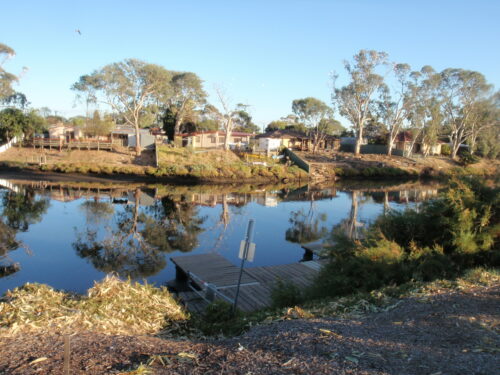
The Onkaparinga River at Old Noarlunga
Some of the material from the David Witton was used to construct the Onkaparinga, a shallow draught vessel which was used on the Onkaparinga River.”
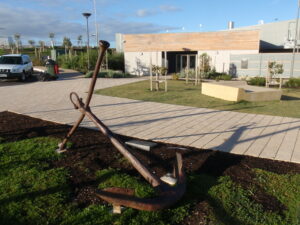
The anchor believed to be from the David Witton
Also, “An anchor believed to be from the David Witton is located at the (Witton) centre….. This bower anchor, raised from the sea by the Underwater Explorers Club in November 1969, is believed to be from the brig David Witton”.
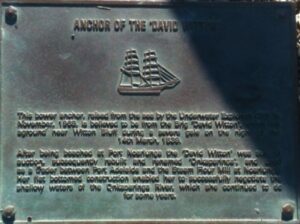
The plaque for the anchor believed to be from the David Witton

